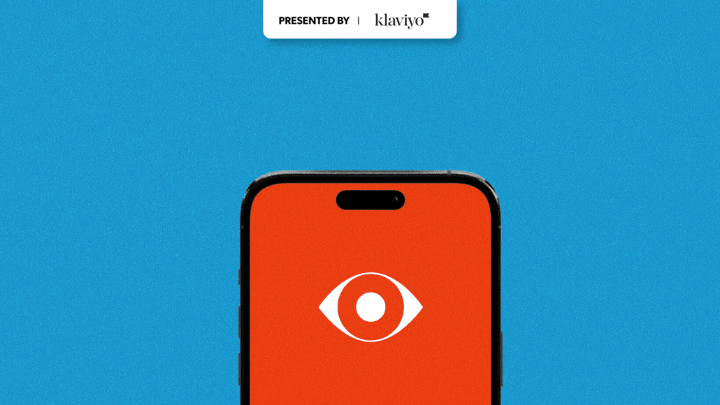
This editorial series examines industry trends across the media, media buying and marketing sectors as 2023 closes and the new year begins. More from the series →
This year has been a rollercoaster for platforms. Some, like Meta and Google soared, while others like Snapchat and X (formerly Twitter) had a rough time. Check out Digiday’s breakdown of who nailed it and who struggled, with some insider insights sprinkled in for that extra detail.
Winners
TikTok
TikTok has had a wild year. It started in the hot seat with its DOJ investigation, and while those troubles aren’t over, most marketers no longer seem concerned about the app getting banned, or its ties to China. Then around halfway through the year its longstanding chief operating officer V Pappas left. All this was playing out against the backdrop of a series of internal restructures including layoffs and a retreat from gaming. But despite all these troubles, spending on advertising on TikTok is growing at a clip. According to ad execs who previously spoke to Digiday, spend on the platform is expected to increase by up to 25% in 2024.
“TikTok is an innovation machine,” said Kevin Goodwin, vp of digital marketing at New Engen. “Every week we get a note about a new feature or product they’re rolling out, so there’s always something new to experiment with,” said Kevin Goodwin. “This has really driven adoption and interest. It’s the number one platform clients bring up, even if it makes no sense for their business from an audience perspective — which tells me TikTok must be doing something right.”
Smaller platforms
LinkedIn, Pinterest and Reddit have each put their best foot forward in 2023, in a bid to accommodate the changing landscape, while dabbling in short-form video and social commerce.
LinkedIn has impressed marketers with their levels of support, and opportunities for beta testing, to the point it can be a tier 1 for some brands. Pinterest has not only leaned into short form video via its publisher partnerships, and its narrative around being a full funnel platform is starting to come to fruition with marketers. Similarly, Reddit has been building the foundations for its social commerce play, while updating ad formats to its inventory.
Google’s Performance Max and Meta’s Advantage+
While they have their faults (being black boxes), marketers can’t get enough of Google and Meta’s more streamlined approach to advertising, dubbed Performance Max and Advantage+, respectively. These tools hand the platforms an unprecedented level of control over campaigns while leaving advertisers with restricted access to analytics and derived insights. It’s like the ultimate “set-it-and-forget-it” strategy taken to the next level. And it’s that strategy which is driving more advertising dollars into these platforms.
Amy Rumpler, svp of search and social media services at Basis Technologies said she can activate [Google] in so many different ways and reach so many different audiences, that “It’s a mainstay of most of our media plans, and I don’t see that going anywhere.”
Similarly for Meta, Andy Taylor, vp of research at Tinuiti said his team was impressed how the platform rebounded from 2022. “I think part of that is from the AI powered campaigns (Advantage+) that help to drive performance for brands,” he said. “Plus [brands] being able to lean into the new Reels inventory and monetize that in creative ways – not just through the video format, but also through overlay ads, as well creating banners on top of the videos.”
Creators
Creators have arguably had a great time this year. Sure, there have been niggles when it comes to transparency over ads (for some — think Lydia Millen), and lack of payouts from creator funds across the board. But, on the flipside, creators are becoming a primary focus for many platforms.
In fact, YouTube, TikTok, Snapchat et al are practically fighting over each other to build products and features that will keep those creators from shifting their often large audiences over to a competitor. This competition has led to the introduction of creator marketplaces to help facilitate business deals. And it has forced some to start shifting from creator funds to revenue-sharing arrangements, as well as offering tips, filters, broadcasting groups, and opportunities for viral fame — all to retain these influential content creators.
In simpler terms, creators are now a linchpin for platforms, akin to what publishers were in the heyday of the text-based era of social media.
Losers
Twitter / X
2023 was the year we watched the blue bird app die a slow death, to be reincarnated as X, the wannabe everything app. About three quarters of staff lost out (they were sacked), users lost out (the platform has become a cesspit for hate speech, antisemitism and misinformation) and ad spend dipped to unprecedented levels.
“The platform is clunky and hasn’t been developed, there’s not been any new or exciting products released this year and I’m not sure performance exists anymore,” Rumpler said. “Given how people think of that platform, we are very hesitant to recommend it at this point.”
Snapchat
It’s been another tough year for Snapchat. Once again, marketers struggled with what to do with it. Most agree it’s great for innovation, but they haven’t seen enough of that this year. But that could be down to the fact this was almost a ‘reset’ year for the company. Rumpler pointed out that the platform’s AR, VR and AI capabilities are compelling, but advertisers are “having a hard time figuring out how much they should invest in those tools and if they are things they should prioritize right now.”
Even the company’s attempts to streamline operations and cut costs have hit advertisers. “Filters and lenses are one of Snapchat’s big differentiators,” said one U.S. advertiser, who exchanged honesty for anonymity. “But while they [Snap] say closing its AR Enterprise division hasn’t impacted business, we’ve actually had experiences where clients had worked with that team, so it has impacted advertiser output, and therefore results.”
Publishers
Social networks once cherished publishers as they filled their platforms with content. Yet, being major news content distributors brought immense responsibility, eventually becoming a costly burden. Just consider how Facebook found itself lauded or faulted for influencing a U.S. presidential election. Over time, the platform distanced itself from the news industry, and this year, tensions escalated.
For instance, traffic from Facebook to Australian news publishers drastically plummeted. Similarly, the platform’s relationship with Canadian publishers soured after it restricted access to their articles for all users following the country’s legislation mandating platforms to compensate news publishers. However, the clearest indication of Meta’s separation from the news industry came with Campbell Brown’s announcement of departing from her role as Meta’s head of global media partnerships.
Meanwhile, over at X, publishers had an equally tough time. From dealing with a decline in referral traffic due to slowing page load speeds to removing headlines (then backtracking) from posts, most have practically given up and are looking for a new home.
TikTok Shop
It could be argued that TikTok Shop was a complete success, given how quick it got off the ground and how accommodating (by way of discounts) the platform was to drum up interest. But what makes the algorithm so great for content, is what’s making it annoying for Shop, said Amy Gilbert, vp of social innovation at The Social Element.
“I think while they cracked that algorithm from a content perspective, they’re really taking it very literally from the Shop perspective, to the point users are getting Shop ads and regular ads so much more than they used to, and the experience really isn’t as great as it once was.”
More in Marketing

TikTok pushes deeper into AI-powered ads amid uncertainty over U.S. ban
TikTok has big plans for Smart+ and search this year, despite its ongoing legal battle.

Sam’s Club sees initial success with digital checkout
Sam’s Club’s CFO said at an investment conference that “if we fast forward into the future,” there will probably be no checkout registers.

How employment is projected to transform in media during the AI era
Experts offer pointers on how to future-proof your career or re-enter the job market in a period of disruption.








